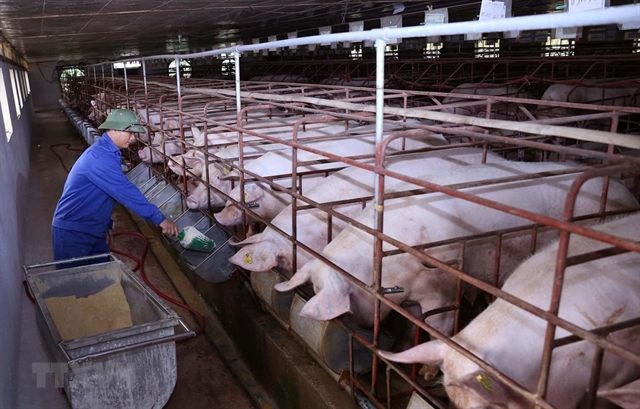 Economy
Economy

 |
| Classifying pork at the factory of the Vinh Anh Food Technology Joint Stock Company in Hà Nội. — VNA/VNS Photo |
HÀ NỘI — In the first 11 months of 2024, Việt Nam spent nearly US$1.6 billion on importing meat and meat by-products, marking a 14.2 per cent increase year-on-year, according to the General Department of Customs.
At the current rate, Việt Nam's spending on these imports is projected to exceed $1.7 billion by the end of this year.
India remains the main supplier of meat and meat products, accounting for nearly 23 per cent of the country's total imports in this category. Over the first ten months, Việt Nam imported about 160,000 tonnes of meat from India, valued at $531.5 million, an increase of 13 per cent in volume and 28 per cent in value year-on-year.
Việt Nam's meat imports from other markets have also grown year-on-year, including Australia, the US, Canada, Poland, South Korea, the Netherlands, Italy, Turkey, Japan, Belgium and France.
Over the past 11 months, Việt Nam imported pork from 40 markets, with Brazil leading at 39.28 per cent of total pork imports, followed by Russia at 29.88 per cent.
The main imports include fresh chilled or frozen poultry meat and edible by-products, fresh frozen buffalo meat, fresh chilled or frozen edible by-products from pigs, buffaloes and cattle, and fresh chilled or frozen pork and beef.
While imports of most types increased, fresh chilled pork saw a decline compared to the same period last year.
The implementation of several free trade agreements (FTAs) in recent years has created favourable conditions for imported meat products to accelerate in volume terms into Việt Nam.
Gradual reductions in import tariffs under these agreements have lowered imported meat prices, prompting many domestic businesses to ramp up imports for local supply.
Việt Nam is among the top ten pork-consuming countries globally. According to the Organisation for Economic Co-operation and Development (OECD), Việt Nam's pork production is forecast to reach four million tonnes by 2025 and 4.7 million tonnes by 2030, reflecting an average annual growth rate of 3.1 per cent. — VNS




